The first calculating machines were created in Poland by Jewish scientists and inventors. But nobody appreciated them, and the Russians "took care of" the devices ...
There would be no computers today without a simple calculator. Calculator - without arithmometers, that is, calculating machines. These began for good in the 17th century. First, the German mathematician Wilhelm Schickard constructed a slider-like machine. Then the French scientist Blaise Pascal - adder, suitable for addition and subtraction.
These devices were not only art for art, they were not a treat for a handful of mathematicians and constructors. It was clear that growing trade and construction required more and more complex, faster and more reliable calculations. This was understood in the West, and not necessarily in the Commonwealth of Poland.
The sons of nobility had little interest in a field as exciting as mathematics and in such a crude occupation as trading. The townspeople lacked education and patrons for such extravagances. So who remained on the battlefield? Our Jews.
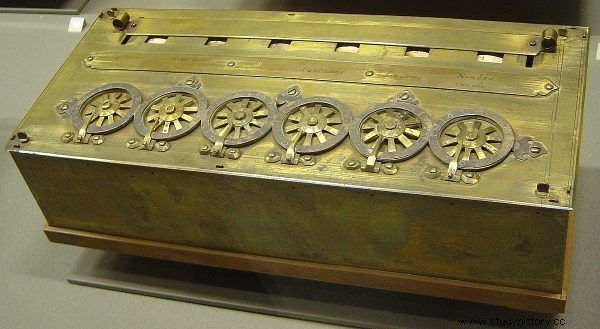
Pascalina - a calculating machine designed by Blaise Pascal (photo:David Monniaux, CC BY-SA 3.0).
Radziwiłł watchmaker
It was several years before the first partition of Poland. The Jewish watchmaker Jewna Jakobson built a calculating machine in Nesvizh - the ancestral home of the Radziwiłłs who generously sponsored artists and craftsmen.
Karol Stanisław Radziwiłł probably watched her with curiosity, when he was able to return to Lithuania after political perturbations. The machine allowed addition, subtraction, multiplication and division. It was probably based on Schickard's design.
A Polish miracle in Russian hands
It is not known how many copies it was written in and what practical application it found. We know, however, that we cannot watch it in Poland. Not even in Belarus, where Niasviž is located today.
Well the only, beautiful copy of Jakobson's machine is in the Science Museum in St. Petersburg (probably it was taken there with many other treasures from the Radziwiłł estate). And there is also a contemporary replica of it - in the American collection of computer scientist from Poland Walter Szrek, made by Frenchman Valery Monnier ...
While the Nesvizh machine was rather just a local curiosity and was based on earlier projects, another arithmometer had a chance to make a worldwide career and was completely original.
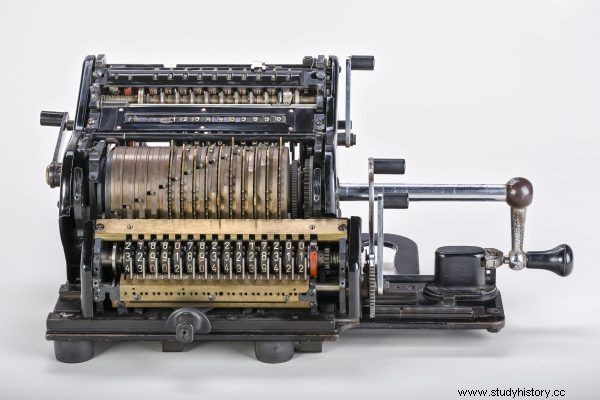
Calculating machines from the turn of the 18th and 19th centuries were not as advanced as the arithmometer from the first half of the 20th century, but they were an important stage in the development of technology (photo:CEphoto, Uwe Aranas / CC-BY-SA-3.0).
The stigma of Jewish science?
Here at the time when the Jakobson device was created, the genius inventor Abraham Stern was born in Hrubieszów. His talent must have been really visible, since Stanisław Staszic himself (an enlightened man, but not fond of Jews) decided to support him. Stern worked on his devices during the times of the Duchy of Warsaw, and after its liquidation - in Congress Poland.
He started with surveying equipment useful for the army. Then he moved to accounting, creating a four-task arithmetic machine, the computational system of which consisted of wheels, rollers and discs with numbers, moved by a crank. Soon he went one step further, building in 1817 a similar arithmometer, which additionally allowed for the extraction of elements.
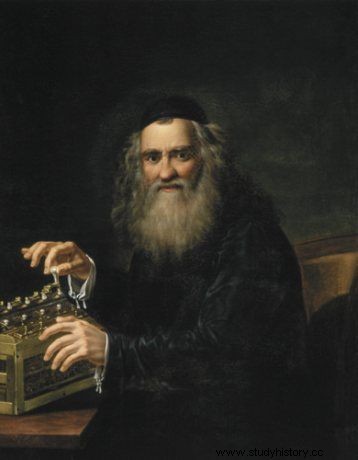
Abraham Stern in the portrait by Jan Antoni Blank.
A machine smarter than the Tsar
Unfortunately, Stern did not get rich on his ideas. His machine might have pushed the Industrial Revolution on a new course, but its surroundings ignored all the potential of the invention. There were several reasons for this.
First, a Jew from a small town could not win the salons' recognition . Second, the elite responsible for the modernization of the country acted sluggishly and the society was poorly educated.
“The members of the Society of the Friends of Science understood that Stern's invention was a revelation. For them, however, the accounting machine was nothing more than a smart toy, and too expensive at that so that you could think about disseminating it ", assessed the 20th-century Polish researcher Adam B. Empacher.
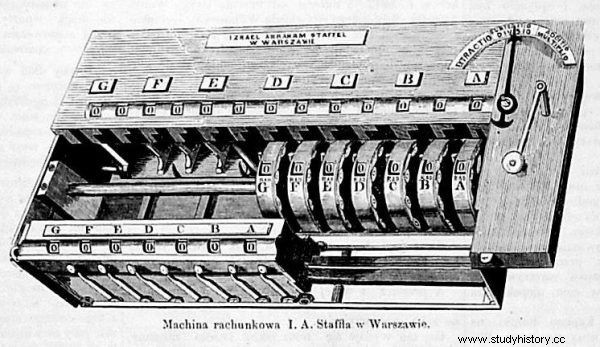
The counting machine of Israel Abraham Staffel, who used the achievements of Abraham Stern.
The cup of bitterness was poured out by the presentation of one of Stern's counting machines by Tsar Alexander I himself (formally the Polish king, ruler of Congress Poland). This is how the meeting with the ruler was described by the great-grandson of the inventor:
He was to demonstrate to him [the tsar] the virtues of his invention, an honor for a Jew truly extraordinary. One of the tsarist adjutants proposed to solve a specific mathematical problem.
The Tsar, who was a bit of science himself, dipped the quill in the inkwell and started counting , writing your calculations on a large sheet of paper. But as soon as he did the first few arithmetic operations, my great-grandfather gave the result.
The tsar cast a mocking look at him:"The machine is good," he said, "but the Jew is bad." Indeed, it was a serious breach of etiquette - to eliminate the ruler.
You praise others…
Copies of Stern's machine could not be found, all were lost. Maybe one day someone will discover them, like the plans of a Schickard machine destroyed during the Thirty Years' War?
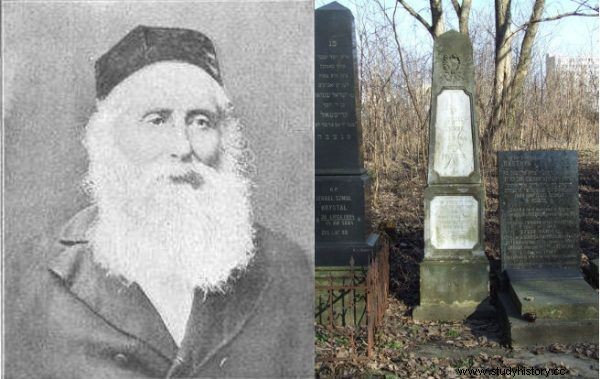
Chaim Zelig Słonimski and his grave at the Jewish cemetery at Okopowa Street in Warsaw (photo from the tombstone of Hubert Śmietanka, CC BY-SA 2.5).
The scientist from Hrubieszów himself is forgotten today. On the other hand, his achievements were used by other Jewish constructors from Poland:Chaim Zelig Słonimski (Stern's son-in-law) and Izrael Abraham Staffel. They have already gained recognition with their machines. Because Polish society was prepared for the revolution, observing what was happening in the West.
It could not see its own geniuses before. After all, "you praise others, you do not know yours", says the Polish proverb.
Bibliography:
- Maciej M. Sysło, History of accounting - people, ideas, machines History of mechanical calculators , lecture from 2007.
- Janina Kumaniecka, The Saga of the Słonimski Family , Iskry 2003.
- Adam B. Empacher, Machines count by themselves? , Common Knowledge 1960.
